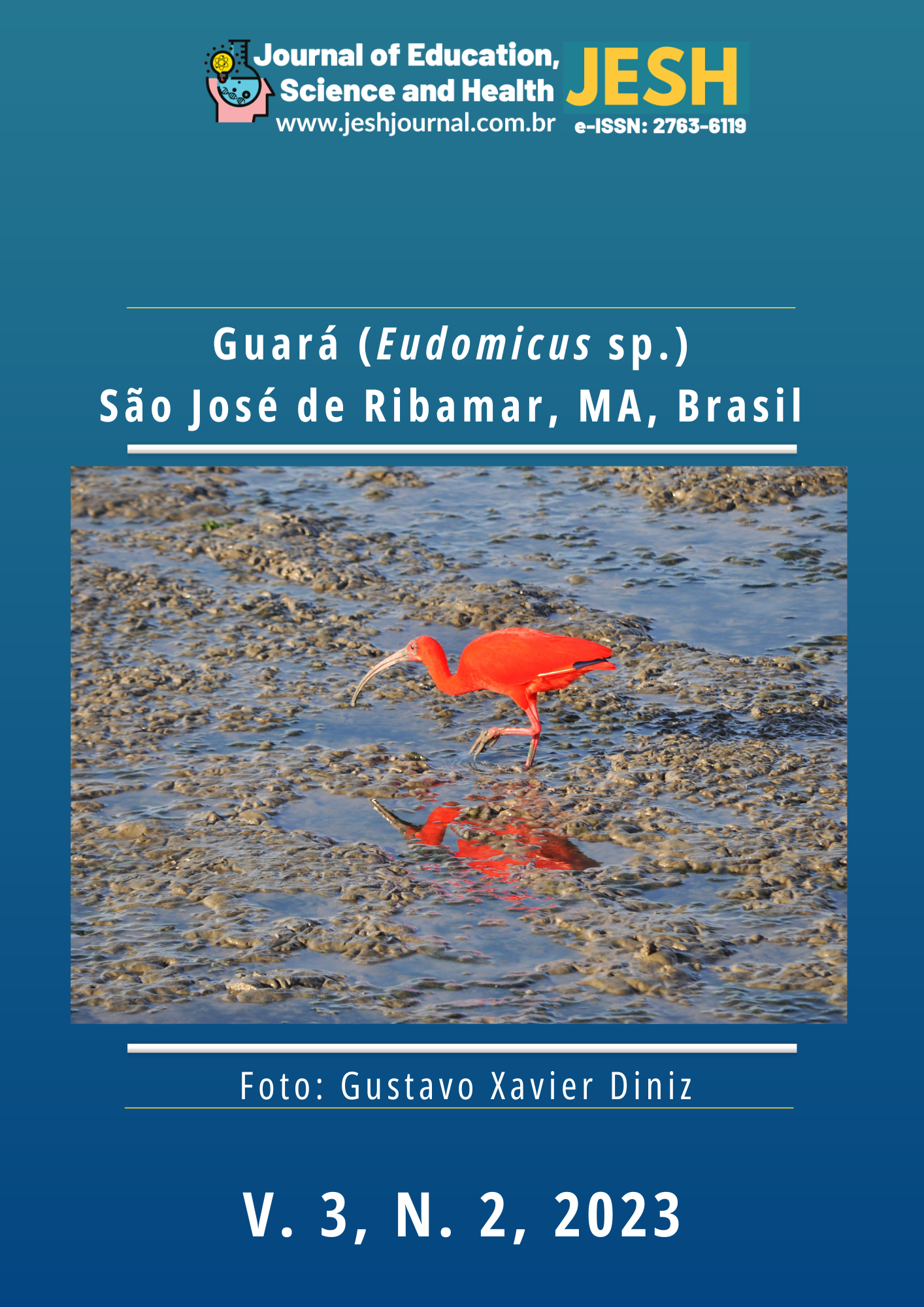New interactions among the moth Oiketicus kirbyi and its plant host
DOI:
10.52832/jesh.v3i2.204Keywords:
Bagworm, Cattleya spp, Ruta graveolens, Piper hispidum, Malpighia sppAbstract
Oiketicus kirbyi (Guilding, 1827) is a moth belonging to the family Psychidae (Insecta, Lepidoptera). This species has a characteristic in its life cycle that is different from the others of its order, where only the adult male undergoes metamorphosis, and the adult female maintains her caterpillar shape (neotenic larva). With a very resistant basket against natural enemies and insecticides, the barworm bug has a long-life cycle (140 days for males and 151 days for females) in the larval stage, which makes it considered a defoliating pest of many crops, since is a polyphagous species and easily adapts to new host species. There are already records in 40 botanical families where the caterpillar can be found. The present work aimed to present new interactions and records of O. kirbyi in the municipality of Tangará da Serra/MT, and through observations and bibliographic research this study resulted in the record of already known interaction, which is Ipomoea coccinea L., in addition to having recorded four new interactions between O. kirbyi and its host plants: Cattleya spp., Ruta graveolens, Piper hispidum and Malpighia spp.
Downloads
Metrics
References
Arce, J. J. C., Filho, O. P. & Filho, E. B. (1987). Biologia do bicho do cesto Oiketicus kirbyi (Lands.-Guilding, 1827) (Lepidoptera, Psychidae) em folhas de Eucalyptus spp. Anais da U.S.A. “Luiz de Queiroz”, 46, 341-358. DOI: https://doi.org/10.1590/S0071-12761987000100016
Ayres, M. I. da C., Puente, R. J. A., Neto, G. F., Uguen, K., & Alfaia, S. S. (2020). Defensivos naturais: manejo alternativo para pragas e doenças. Manaus: Editora INPA, 1, 1-32.
Barros, T. R. (2017). Diversidade e hábito alimentar de espécies lepidópteras associadas ao cajueiro no Brasil. (Trabalho de conclusão de curso, Universidade Federal do Ceará). https://www.google.com/url?sa=t&rct=j&q=&esrc=s&source=web&cd=&ved=2ahUKEwj-h7Or1vv5AhVoIrkGHfJDCDkQFnoECAIQAQ&url=https%3A%2F%2Frepositorio.ufc.br%2Fhandle%2Friufc%2F37570&usg=AOvVaw1X1_WOj475gf1H8OEy9pCL
Baronio, C. A., Silva, A., Phillipus, R. L., & Botten, M. (2012). Bioecologia e controle do bicho do cesto Oiketicus kirbyi (Guilding, 1927) (Lepidoptera: Psychidae) em pessegueiro e videira. EMBRAPA: Comunicado técnico 123, 1, 1-9.
Castro, P. R. de C., Angelini, B. G., Mendes, A. C. C. M., Dechen, A. R., & Garcia, E. M. (Org.). (2017). Orquídeas. Piracicaba: ESALQ - Divisão de Biblioteca.
Calgara, M., & Braga, M. B. (Org.). (2012). A cultura da acerola. Brasília, DF: Embrapa.
Costa, A. N. (2012). Análise físico-química da acerola (Malpighia glabra L.) provenientes do município de Aruques-RO. (Monografia de graduação, Química da Faculdade de Educação e Meio Ambiente - FAEMA). https://repositorio.faema.edu.br/bitstream/123456789/633/1/COSTA,%20A.%20N.%20-%20AN%C3%81LISE%20F%C3%8DSICO-QU%C3%8DMICA%20DA%20ACEROLA%20(Malpighia%20glabra%20L.)%20PROVENIENTE%20DO%20MUNIC%C3%8DPIO%20DE%20ARIQUEMES-RO.pdf
Dornelas Júnior, L. F., Bisi, E. J. R., & Santos, M. R. A. (2020). Propagação vegetativa de jaborandi (Piper hispidum) por meio de estacas foliares. Embrapa Rondônia, 1-19.
Freitas, F. A. M., & LIMA, R. A. (2021). Um estudo bibliográfico sobre a Ruta graveolens L. (RUTACEAE). Revista Biodiversidade, 20(3), 111-120. https://periodicoscientificos.ufmt.br/ojs/index.php/biodiversidade/article/view/12952
Guimarâes, E. F., & Giordano, L. C. S. (2004). Piperaceae do Nordeste brasileiro I: estado do Ceará. Rodriguesia, 55(84), 21-46. https://www.scielo.br/j/rod/a/5zYPzJyxJQJQ5mhrRK8wC5J/?lang=pt DOI: https://doi.org/10.1590/2175-78602004558402
Gorayeb, T. C. C., Martins, F. H., Costa, M. V. C. G., Junior, J. G. C., Bertolin, D. C., & Dezani, A. A. (2019). Estudo das perdas e desperdício de frutas no Brasil. Anais Sintagro, 11(1).
Guzzo, E. C., & Lima M. S. (2020). Oiketicus kirbyi (Guilding, 1827) (Lepidoptera: Psychidae) infestando Ixora coccinea L. (Rubiaceae) em Alagoas, Brasil. Diversitas Journal,. 5(4), 2509-2519. https://doi.org/10.17648/diversitas-journal-v5i4-1280 DOI: https://doi.org/10.17648/diversitas-journal-v5i4-1280
Lima, A. C. (1945). Insetos do Brasil. 5oTomo. Lepidópteros. (1a parte). Rio de Janeiro, Serviço Gráfico do I.B.G.E.
Santos, M. R. A., Silva, A. G., Lima, R. A., Lima, D. K. S., SALLET, L. A. P., Teixeira, C. A. D., Polli, A. R., & Facundo, V. A. (2010). Atividade inseticida do extrato das folhas de Piper hispidum (Piperaceae) sobre a broca-do-café (Hypothenemus hampei). Brazilian Journal of Botany, 33(2), 319-324. DOI: https://doi.org/10.1590/S0100-84042010000200012
Schneiders, D., Pescador, R., Booz, M. R., & Suzuk R. M. (2012). Germinação, crescimento e desenvolvimento in vitro de orquídeas (Cattleya spp., Orchidaceae). Revista Ceres, 59, 185-191. DOI: https://doi.org/10.1590/S0034-737X2012000200006
Silva, J. P., Souza, L. L., Melo, C. de M., & Neto, S. (2020). Inseticidas botânicos no controle de formigas. Revista Desafios, 7, 163-171. DOI: https://doi.org/10.20873/uftv7-6173
Silva, M. S., Oliveira, I. P., Junior, N. M. A., Vilar, S. B. O., & Barro, A. C. (2020). Caracterização de diferentes variedades de acerola (Malpighia emarginata DC.) comercializadas em Petrolina-PE. V congresso internacional das ciências agrárias, edição 100% virtual, 1-16.
Downloads
Published
How to Cite
Issue
Section
License
Copyright (c) 2023 Journal of Education, Science and Health – JESH

This work is licensed under a Creative Commons Attribution-NonCommercial 4.0 International License.

































